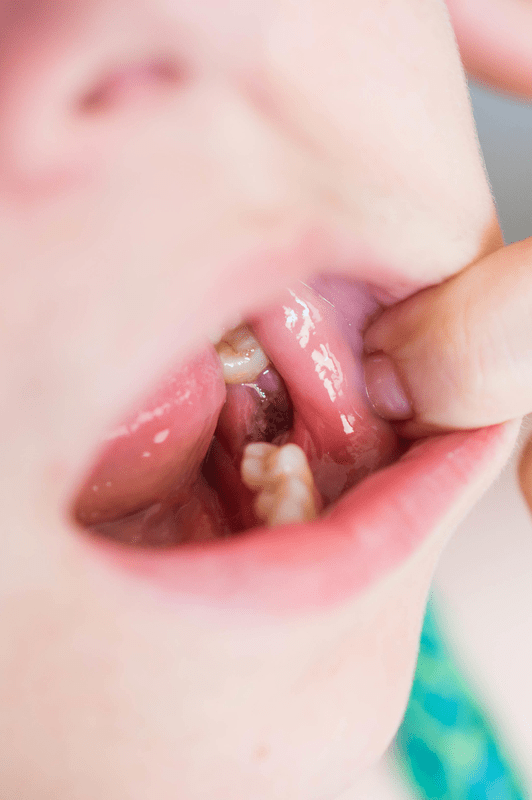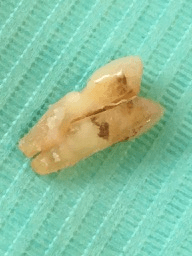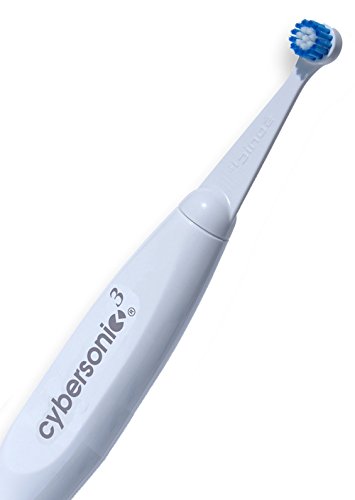Tooth Extraction Infection
Pain - a Dry Socket?
A tooth extraction infection is always a possibility after you have had a tooth removed. Sometimes people call it a dry socket.
But an infection after a tooth extraction and a dry socket are NOT the same thing. Most folks who think they have a "tooth extraction infection" actually have a completely different problem, called dry socket. Find out the difference by reading on!
Remember, if you are concerned about any dental issue and you want my personal profession opinion, you can contact me at JustAnswer here.
 Is this a tooth extraction infection?
Is this a tooth extraction infection?What is a dry socket? It's the empty socket in the gum that's left behind when you've had a tooth out. It's empty because there's no blood clot in there. And that's the problem. An empty tooth extraction socket will be SLOW to heal.
The pain is caused by an inflammation of the bone surrounding the socket, which happens when there is little or no blood clot to cover the bone. There is NO infection, no bacteria. Just exposed, inflamed bone, which is usually VERY painful.
Normally, after an extraction, the remaining socket in the gum fills with blood, which then clots. This blood clot then covers the bone of the socket, and gradually becomes firmer and firmer as it heals. Eventually new gum tissue grows in there.
Without a blood clot, the walls of the socket are basically raw bone.
An empty socket will also trap bits of food.
What a drag! You get a tooth pulled because it's causing a problem, and you still end up with pain!
What IS a tooth extraction infection?
This is an infection in the GUM, (NOT THE BONE), where you've had a tooth removed. It's caused by bacteria in the gum.
Either the tooth had an infection on the root before it was pulled out, OR bacteria got into the socket AFTER the extraction somehow.
Either way, after you have had your tooth taken out, you have pain, swelling, and a sore red gum. If you can look at the gum where the tooth was removed, you will probably see the socket left behind, filled with a blood clot. The clot is VERY important! Do NOT try to rinse it out by mouth washing.
The clot in the socket protects the bone underneath, and the clot eventually heals to become new gum.
BUT if you have a tooth extraction infection, the gum where you had the tooth taken out will be red, slightly puffy, and very tender when you poke it with your finger.
You may well have difficulty opening your mouth wider then an inch or so.
On the other hand, a dry socket is a BONE problem.
There are a number of things that increase the chances of getting a dry socket. In general, lower teeth are more likely to get a dry socket after a tooth extraction than upper teeth. Molar teeth (back teeth) are also more at risk than front teeth.
If you want to read more about what's involved in having a tooth removed, have a look at my page on Getting A Tooth Pulled. This explains the procedure that you can expect.
Other things that increase the risk of a dry socket are:
- Smoking within 48 hours of the extraction.
- Rinsing out too soon after the extraction. (Within 24 hours.)
- A difficult extraction that takes a long time.
 A cracked tooth after removal
A cracked tooth after removalHow do you know if you have a dry socket?
You only need to know 3 things;
1. You have had a tooth removed within the last 5 days. The pain typically starts 3 to 5 days AFTER the extraction.
2. The jaw where you had the tooth out is very painful. But there's no swelling.
3. You also have a bad taste in your mouth, and may be aware of a foul-smelling odor. This is caused by bits of food getting stuck in the socket.
Tooth Extraction Infection
What's the treatment?
If it really IS a dry socket, without any infection, it will settle down by itself within about 10 days. If you are in a lot of pain, there is a very specific regime using over the counter products that provides a high level of pain control: take 600 mg of ibuprofen (3 standard Advil tablets) with 1000 mg acetaminophen (2 Extra-Strength Tylenol), and repeat every 6 hours as needed.
In mild cases, you may speed things up by rinsing VERY GENTLY around the socket with really hot salty water, several times a day.
An additional treatment is to apply a blob of aloe vera gel. The aloe gel has strong antiseptic and anti-inflammatory properties, and will reduce the redness and swelling where your gum is sore. It's remarkably effective, according to research.
Just squeeze out a small blob of gel onto your fingertip (less than the amount of toothpaste you would put on a toothbrush) and smear it into the gum hole where it's sore. Repeat every hour.
BUT this only works with a high-quality gel, and I recommend the Forever Living product.
But for fastest results, you should go back to the dentist. He will freeze up the gum, and gently clean out the the socket. Then he should put a dressing in the socket afterwards. Some dressings dissolve on their own over a few days, while other types will need to be removed a week later.
Antibiotics will only help if you actually have a true bacterial infection in the socket. If you do NOT have a true infection in the socket, then ANTIBIOTICS WILL NOT HELP.
Remember to check out my top recommended electric toothbrush, which has the best performance and a great price at Amazon - the Cybersonic 3 brush.
Tooth Extraction Infection
A true tooth extraction infection is usually painful within a day or two of getting the tooth out, and there is swelling and redness in the gum.
Things that increase the risk of infection are:
- A tooth that had an infection before it was pulled.
- If you are a smoker.
- Poor blood supply in the jaw, for example after radiation treatment for cancer.
The words "tooth extraction infection" and "dry socket" are frequently used to mean the same thing. But as you can see there are big differences between the two! An infection happens quite soon after the extraction, and causes swelling in the gum.
On the other hand, a dry socket happens 3 to 5 days AFTER the extraction, and there is NO swelling. BUT BOTH OF THEM ARE PAINFUL!
For a true infection, you will need antibiotics. Have a look at my antibiotics page. This runs down a list of commonly-used antibiotics in dentistry.
For information on the best foods to eat, and those to avoid after tooth extraction, go to my page HERE.
Remember, if you are concerned about any dental issue, and want my personal profession opinion, you can contact me at JustAnswer here.




